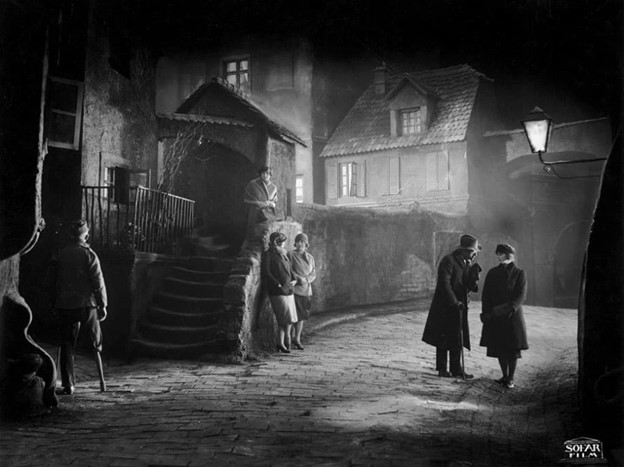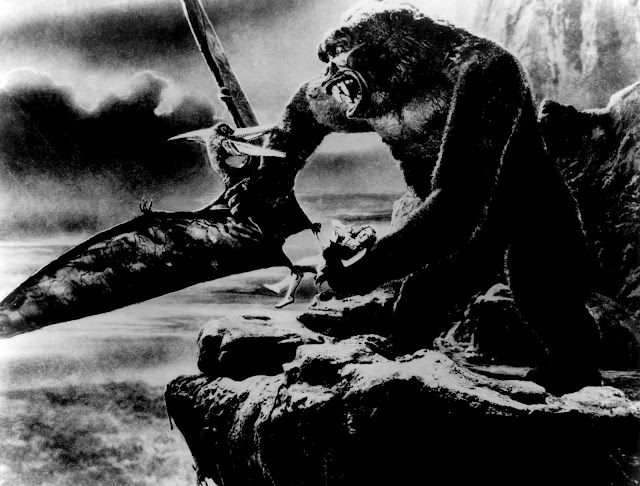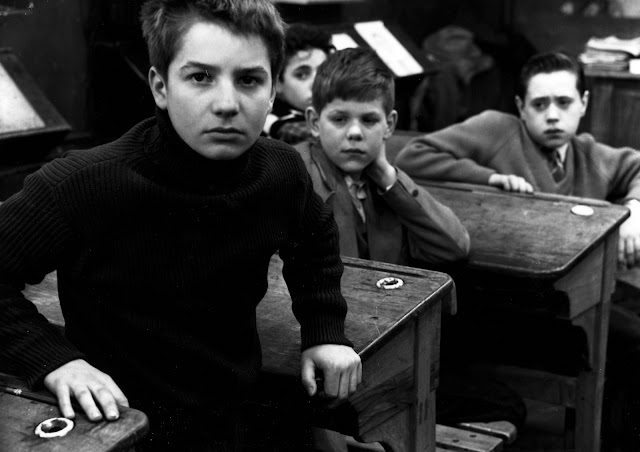The Joyless Street (1925)
G.W. Pabst's "The Joyless Street"
By 1925, Germany had all but cemented expressionism as the most efficient and creative means of visual expression in the film industry. It depicted the terror the country was experiencing after the first World War. The country was in a state of hyperinflation and the divide between rich and poor had never been greater. There were many in the film industry who grew tired of the pretentions expressionism was creating. Because Expressionism was being placed on such a pedestal, many felt that it was becoming too far removed from the economically downtrodden it purported to represent. So, an up-and-coming director named G.W. Pabst created a film that would shed away expressionist tendencies. This film was "The Joyless Street." With this film, Pabst utilized a new form of expression and in doing so, regained the connection to the hopelessness that expressionism had seemed to forget.
The film takes place in Vienna during the Austrian post-war hyperinflation period in 1921. In the poorest part of the city called Melchiorgasse, there are only two people of wealth: a butcher who holds the food supply and Mrs. Greifer, who owns a fashion boutique and nightclub. This fashion boutique and nightclub are patronized by the wealthy elite. Two women, Grete and Maria, try to better their circumstances. As they do, they must submit themselves to various demeaning activities and come across various unsavory activities by others. The seedy things witnessed in the film are vast: wealthy elites manipulating the stock market for their own gain, the upper classes wallowing in their own luxury all while the homeless and unemployed live in squalor, selling themselves for chunks of meat. Not to mention murders taking place. The wealthy treat the commoners like slaves, as they can order around the have-nots with the simple promise of scraps.
The blatant examination of the economic corruption of the wealthy class is one of the very reasons for the continuous censorship of the film. "The Joyless Street" did not hold anything back as far as how depraved and unsavory things have gotten in German society. The film was incredibly provocative. Lust, abuse, corruption, murder, economic rape, literal rape, orgies, jealousy, prostitution, and homelessness are just a few of the touch-upon subjects that the film captures. The state considered the film too provocative and had the film cut down continuously over the years.
So, how exactly did the film capture such intense subject matters without falling into the pretensions of expressionism? The answer is quite simple. Pabst simply shot things as simple as possible. The simplicity and plainness with which images were showcased was already a stark rejection of the popular expressionist movement. On top of that, the images appear to resemble something closer to real life as opposed to a subjective rendering. Also, it was not portrayed theatrically as in the American films of the time. The plainness and slow pace with which the film moves capture something close to something the viewer can perceive as the 'real world.' Because the viewer can recognize these images as being 'real,' the experiences of the fictional characters seem all too close to reality, as well. With that, the viewer recognizes the world happening on screen is not at all different than what's happening outside of the theater. This filmmaking style was called 'New Objectivity.' It was a style dramatically different from the more artistic styles of the time. It would eventually morph into 'New Realism,' which would go on to inspire 'Poetic Realism' of the 1930s and 'Neo-Realism' of the 1940s. The New Objectivity movement that spread through Germany in the mid-1920s is retrospectively considered one of the most important film movements in history. Its harsh depiction of the lower class would become the subject most associated with the Realist movements for decades to come.
Despite being one of the spearheads of the New Objectivity movement, G.W. Pabst did not pigeonhole himself. He went on to experiment with all different kinds of filmmaking techniques and movements, even the dreaded Expressionism. However, with "The Joyless Street," he helped spark a revolution for the depictions of lower-class society to come.




Comments
Post a Comment